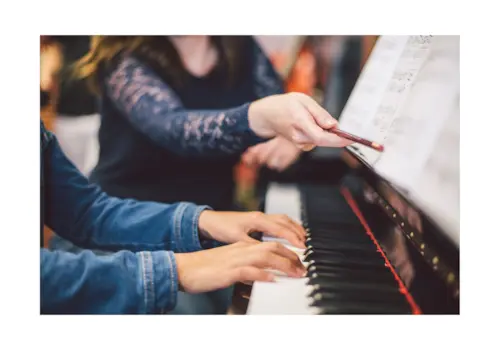Musician and teacher John Geraghty presents the final lesson in his six-part series on Jazz Improvisation
There are many sub-genres of jazz: Trad, Swing, Stride, Modal, Bebop and Acid, to name a few. One very popular sub-genre is Latin jazz. Latin jazz is played in straight quavers rather than with a ‘swing’ feel as previously learned in Lesson 2.
Afro-Brazilian (Bossa Nova)
The two main categories of Latin jazz are Afro-Cuban and Afro-Brazilian. Afro-Cuban jazz is based around Cuban dance music like Salsa, Cha-cha-chá and Mambo. This music uses a repetitive two-bar rhythmic pattern played on a clave throughout a song. Afro-Brazilian jazz is based on Brazilian music such as Samba and Bossa Nova, and uses more improvised rhythms.
The following tune is a new tune using the bossa nova style called Salvador Shore, inspired by the most famous bossa nova tune: The Girl From Ipanema written by Antônio Carlos Jobim.
Let’s use everything that’s been learned up to now in this Jazz Improvisation series step by step, so that you get a better understanding of how most jazz musicians would tackle playing the tune and improvising over it.
Need a refresh of the previous five parts before you continue? View them below:

Learn the tune
Step 1: Learn Salvador Shore off by heart. Decide on an appropriate fingering. Take a listen to Salvador Shore to get a feel for it. Usually, you would want to listen to as many people playing this tune, but since it’s an original tune, you’ll be the first!
Step 2: Practise playing it over the Salvador Shore backing track.
Step 3: Find new ways to change the original melody. Create tension by playing different notes before the target note. See Note Targeting in Lesson 3.
Learn the harmony
Step 4: Work out the basic seventh chords, which are the chord tones, and then play the chords over the Salvador Shore backing track so that you understand the chord progression. Remember to work out the inversions for these chords too! See Learn your Chords in Lesson 4.

Work out a bass line
Step 5: Work out a bossa nova bass line using the rhythmic ideas below, over all the seventh chords.
Notice that...
- The first beat is always the root note (F)
- The third beat is always the fifth note (C) of the chord
- The off-beats can either be the root, fifth, octave or a chromatic note

Add in the right hand chords
Step 6: Practise playing your left hand bossa nova bass line using the seventh chords in step 4.
Here’s some ways you can do this…
Example 1

Example 2

Left hand rootless chord voicings
Step 7: Learn left hand chord voicings. Learn the following rootless chords and then practice them over the backing track.

Right hand improvisation
Step 8: Play over the changes. Use the seventh chords and their inversions learned in step 4. See Playing over the Changes in Lesson 4.
Step 9: Work out melodic ideas, based around the melody. You can even try using the three-note rootless chords shown above in Step 7 to create your own. The melody shown below uses the three notes G, A and C from the first chord, F, in the first bracket and uses A, B and D from the G chord in the second bracket.

Here are some other ideas you can try out when improvising...
Broken chords
Use three-note chords.

Chord arpeggios
Use chord arpeggios and their inversions: Ascending, descending and other combinations, linking between chords using chromatic notes. See Finding Links in Lesson 4.

Tension and release
Create tension and release by using chromatic notes before the target note. See Note Targeting in Lesson 3.

Scales
Even though this isn’t a blues tune, the C blues scale even works in Latin music as shown below between the bracket over Abmaj7.

Sequences
Shorter sequences up to four notes could be used over one bar. Longer sequences could be used over two bars. See Sequences in Lesson 4.

Same lick, different chord
Try using the same ‘lick’ over different chords. Listen to the tension and release over each chord.

Salvador Shore (piano solo)
Step 10: Use ideas from other people's solos!
To help you get started, below is a piano solo that you can try out. When soloing with the right hand, use your right hand ‘comping’ ideas (step 6), in the left hand.
You can listen to the solo here.

Further your study...
- Build up a collection of your favourite jazz tracks
- Buy a jazz ‘fake’ book and learn a new tune every week
- Learn new chords for both right and left hand
- Learn new ‘licks’ and try them out over different chords
- Jam with some friends!
Thank you for reading this series. We really hope you enjoyed playing over all the ideas at home and that you’ve come away with a better understanding of what it takes to learn jazz improvisation.
About the author
John Geraghty is a songwriter, music producer, pianist, author, teacher and entrepreneur. Although John is a classically trained pianist, his passion lies in songwriting and music producing. He has studied most genres of music including pop, jazz, gospel, country, and blues piano.
He is the author of Playing By Ear – A Songwriter's Way. His teaching method is simple and direct: "Leave out everything that is not necessary and teach the student what they really want to know.








